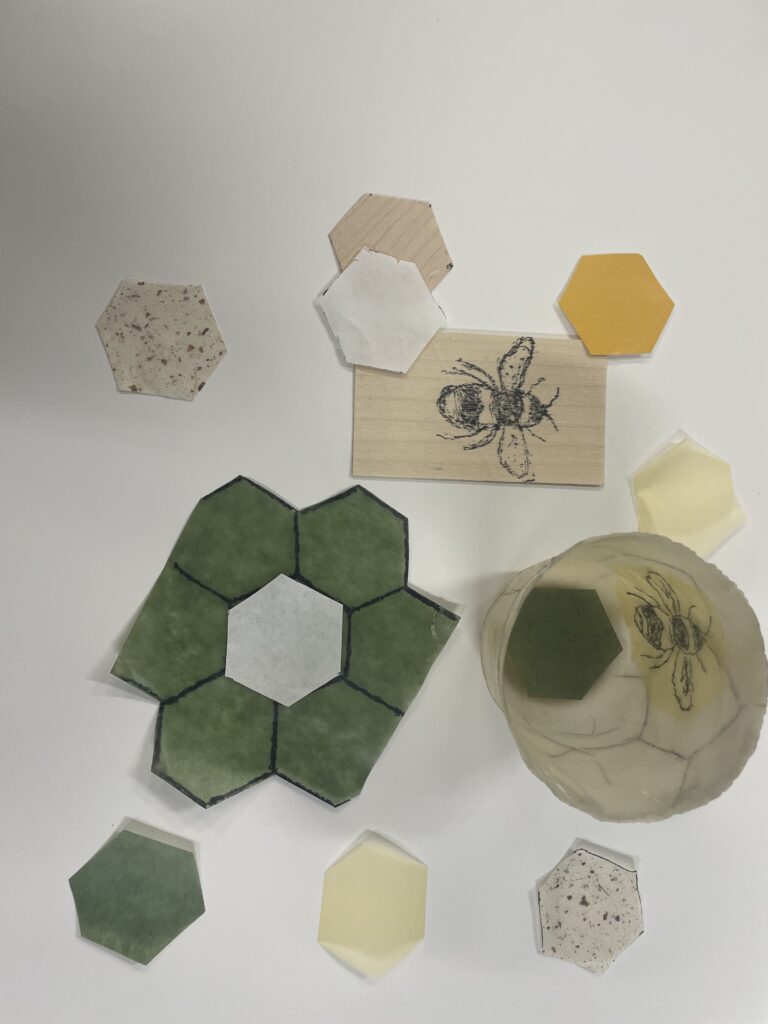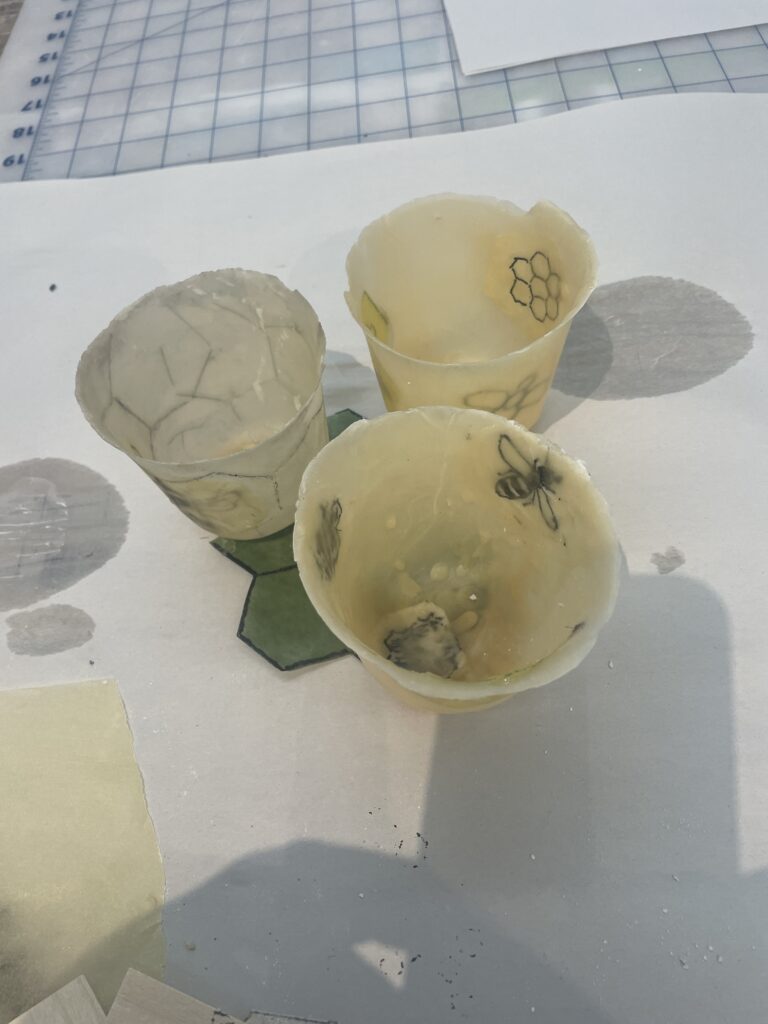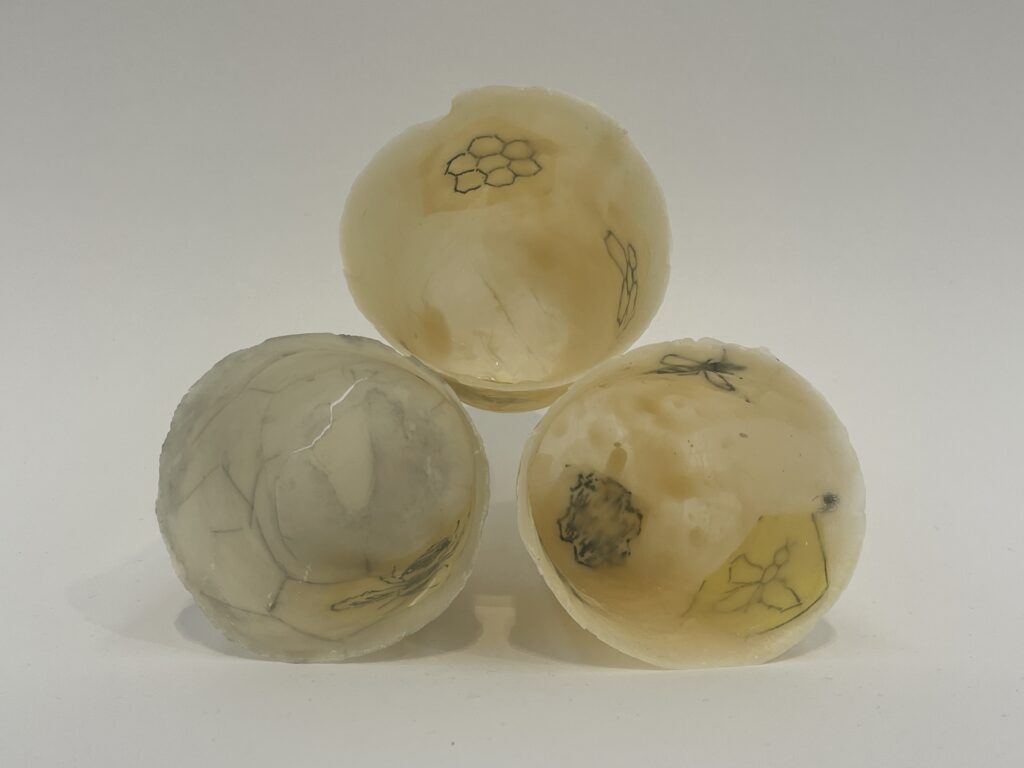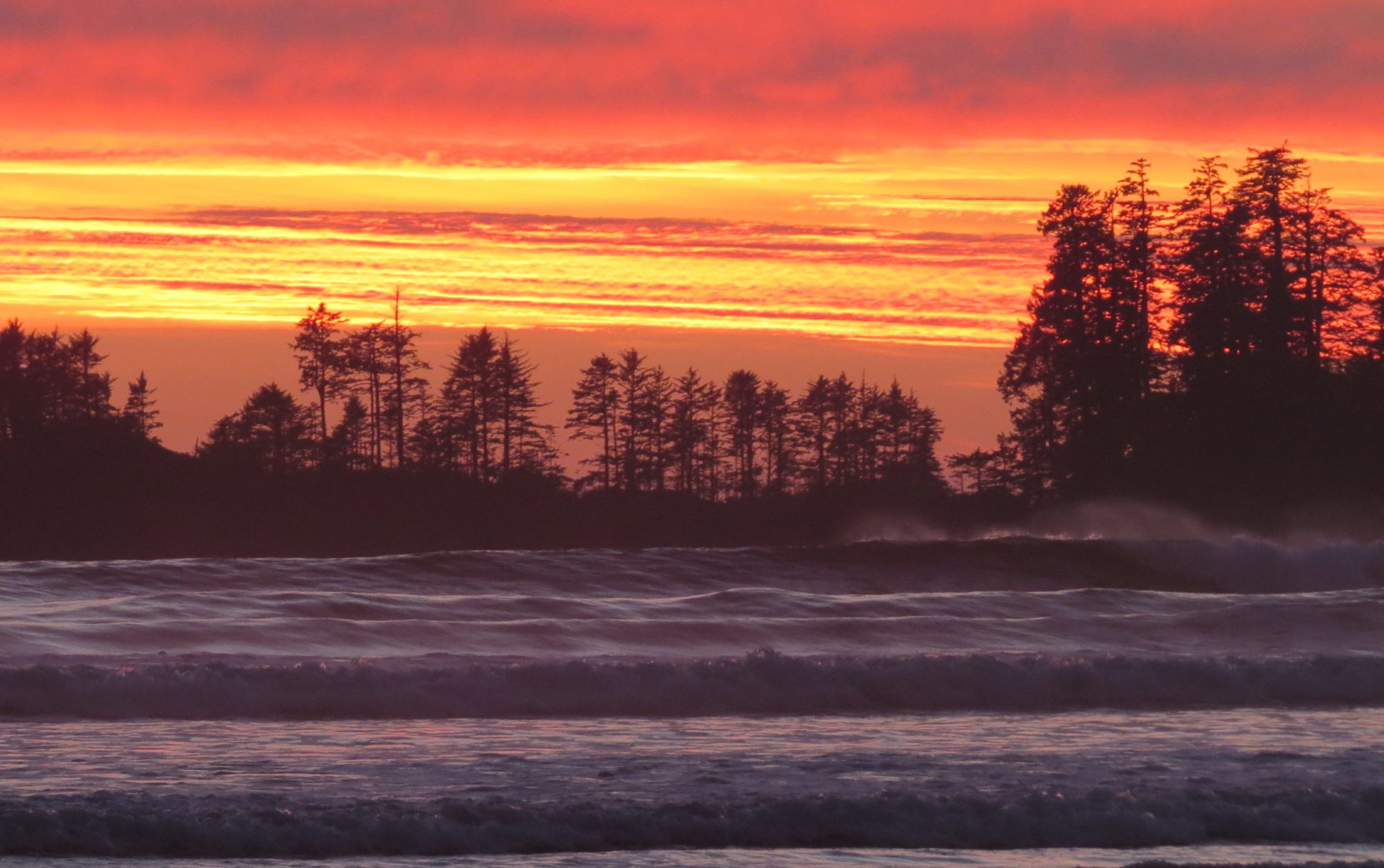In 1978 I travelled from England to stay for six months on a bee farm in Poltimore, Quebec. Moon Rain Farm was the home of Canadian Tapestry Artist, Thoma Ewen, and her then partner, orchestra conductor Bill Phillips. They had around 80 beehives, and I spent the summer renovating their barn, working with the bees, building supers and frames following and capturing swarms, removing the supers, removing the wax with a heated knife, spinning the honey and selling it at the local farmers market. I left Canada to return to England just as snow was falling on the ground. We brought all the hives indoors and made up a sugar solution for the bees, which is what you see with the feeder boards.
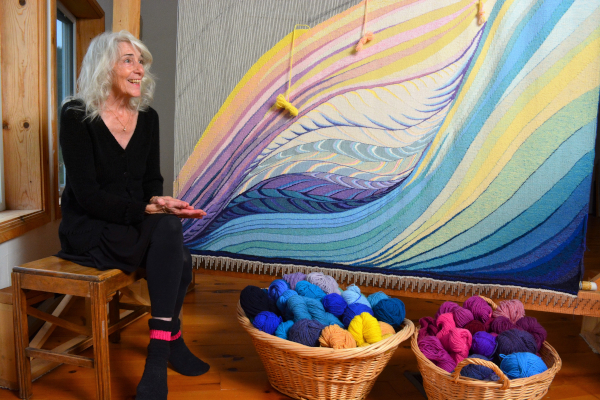
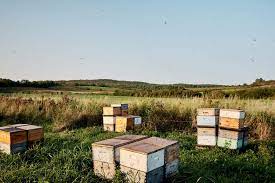
Above you can see Thoma and the hives. This experience gave me a great connection with the bees, understanding some of their behavior – for example around the hives was not a good place to be when a storm was brewing as it made the bees very agitated. While I could normally do many of the tasks with a simple puff of smoke and without the need for protective gear, at that time the bees could become very aggressive and sting with the least provocation. We had a lot of fun in the evenings sculpting beeswax figures and remelting them.
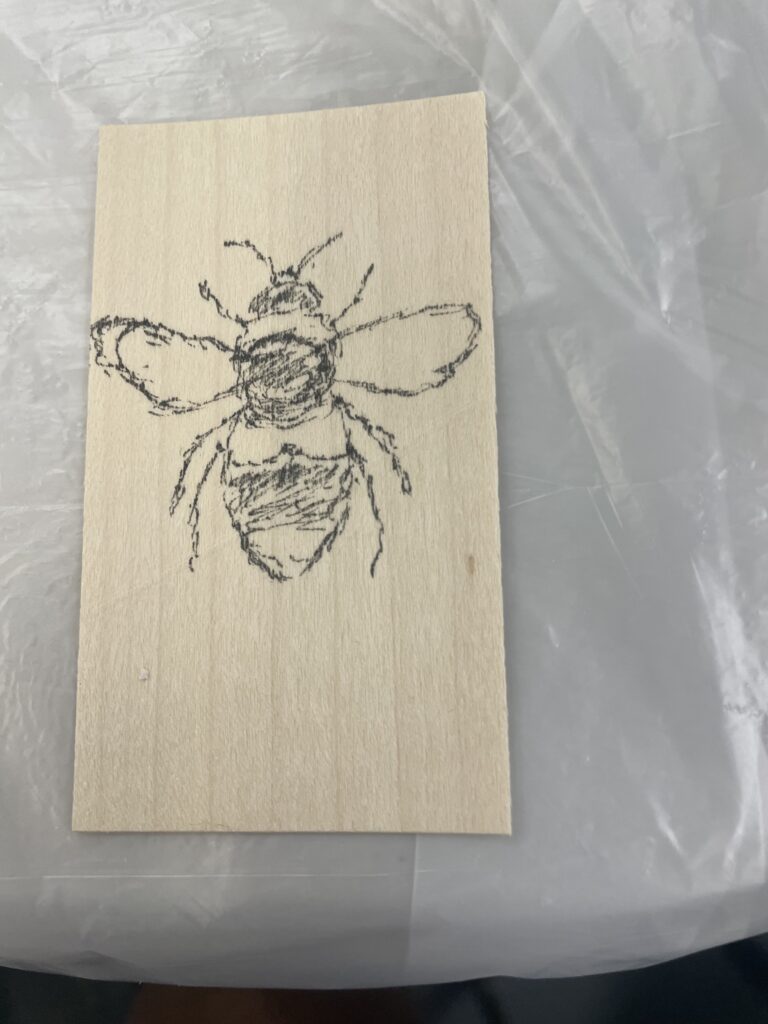
This is the first bee template I made to be incorporated into the cup mould
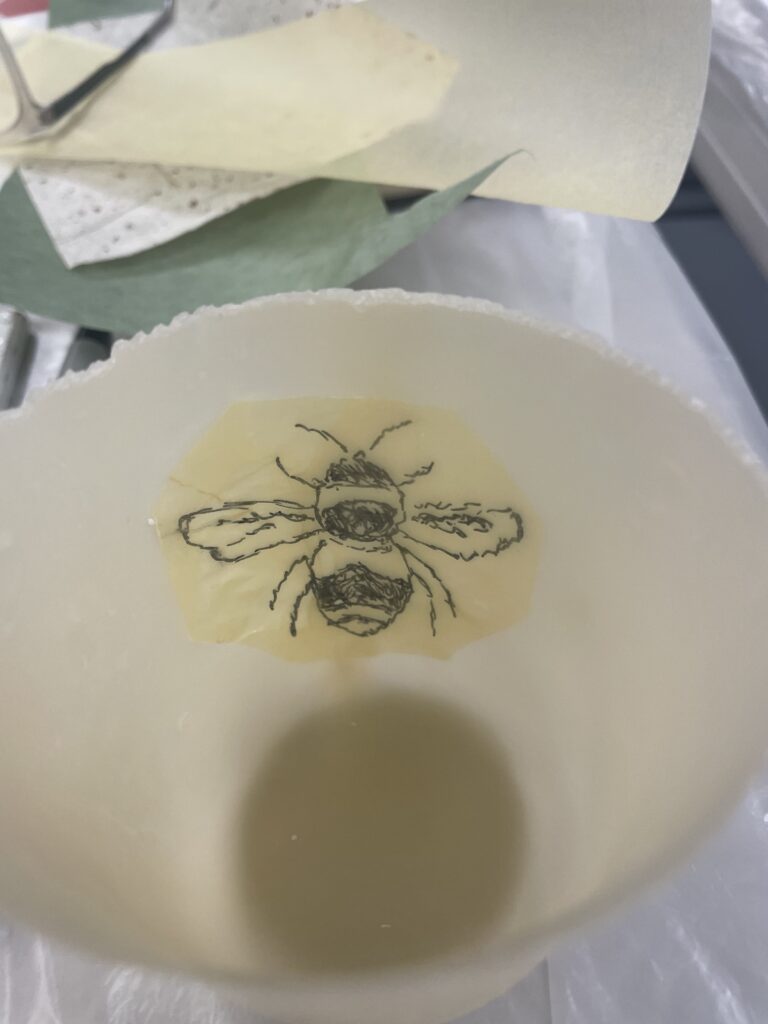
I experimented tracing the bee template onto several different types of paper. When I incorporated the bee into the cup I chose to have the image show on the inside rather than the outside as it would be clearer through less layers of wax and I had some ideas about the outside. I was interested in the hexagon shapes of the comb and made a wooden template of the hexagon shape to scribe into the outside of the cup and then rubbed India ink into the cuts.
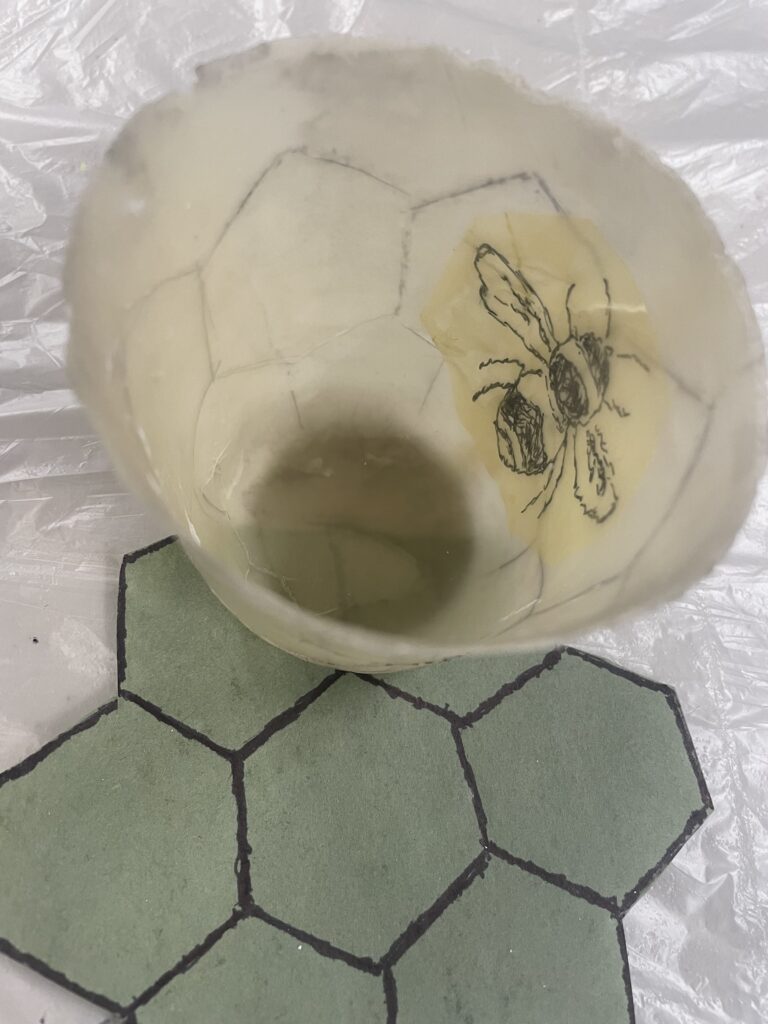
I like the hexagons and am planning on doing some more work with them as this assignment progresses, though I’m not sure quite what yet.
